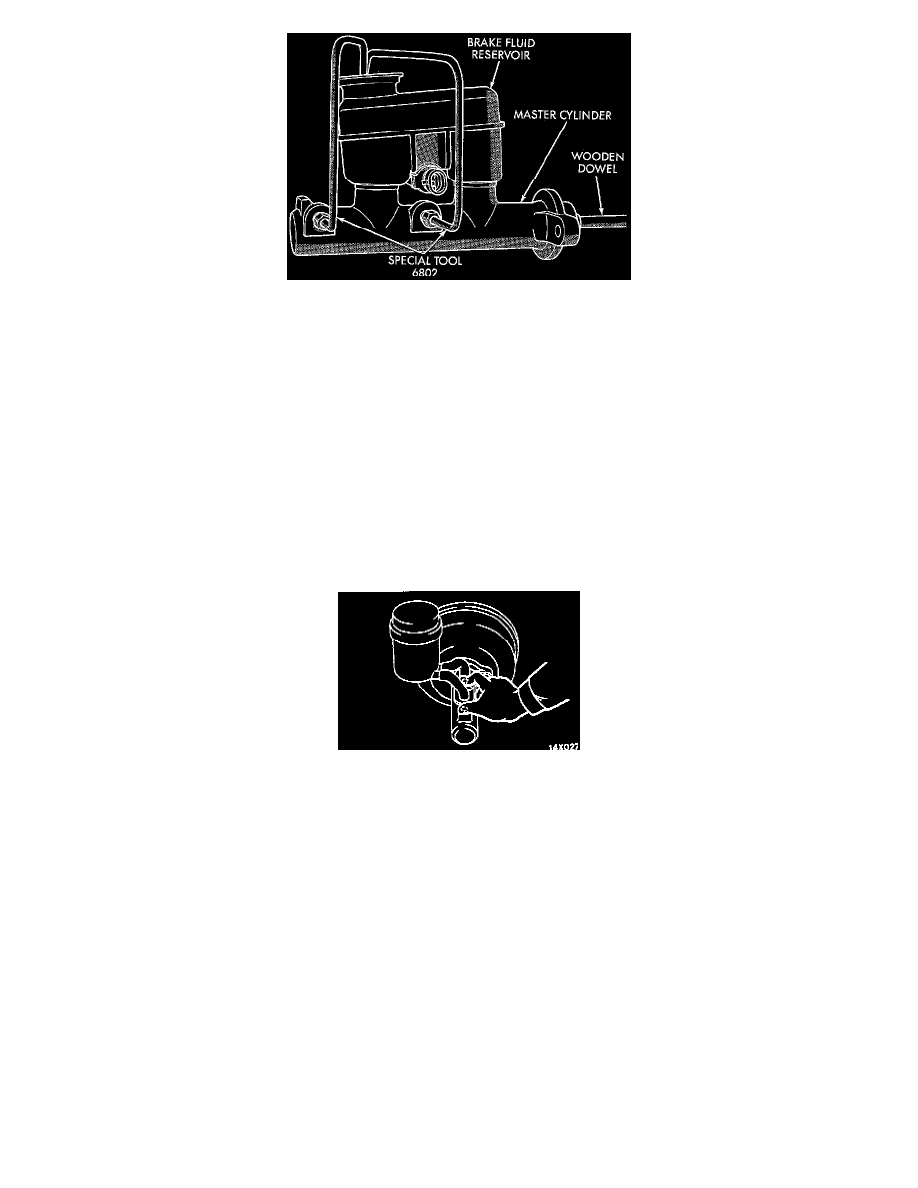Sebring Convertible V6-2.5L SOHC 24 Valve (1996)

Bleeding Master Cylinder
PROCEDURE
1. Clamp the master cylinder in a vise. Attach bleeding tubes, Special Tool 6802, or equivalent to the master cylinder outlet ports. Position bleeding
tubes so the outlets of the bleeding tubes will be below the surface of the brake fluid when reservoir is filled to proper level.
2. Fill brake fluid reservoir with brake fluid conforming to DOT 3 specifications such as Mopar or an equivalent.
3. Using a wooden dowel. Depress push rod slowly, and then allow pistons to return to the released position. Continue to repeat this step several
times after no more air bubbles are expelled from bleed tubes to ensure all air is bled from the master cylinder.
4. Remove bleeding tubes from master cylinder outlet ports, plug outlet ports and install fill cap on reservoir.
5. Remove master cylinder from vise and install master cylinder into vehicle.
6. Bleed the entire hydraulic system.
Manual Bleeding
CAUTION: Use the specified brake fluid. Don't use a mixture of the specified brake fluid and another non-specified fluid.
Specified brake fluid: MOPAR DOT 3 or DOT 4
PROCEDURE
NOTE: The master cylinder has no check valve, so if bleeding is carried out by the following procedure, bleeding of air from the brake line will
become easier.
1. Fill the reserve tank with brake fluid.
2. Keep the brake pedal depressed.
3. Have another person cover the master cylinder outlet with a finger.
4. With the outlet still closed, release the brake pedal.
5. Repeat steps 2 - 4 three or four times to fill the inside of the master cylinder with brake fluid.
Pressure Bleeding
Master cylinders may be bled manually or by pressure bleeding. It is recommended that the master cylinder be bled before bleeding the wheel cylinders
and calipers.
PRESSURE BLEED
1. Ensure master cylinder reservoir is full. Add suitable brake fluid as needed.
2. Install pressure bleeder according to manufacturer specifications.
3. Position a drain pan under the master cylinder.
4. Loosen brake lines, or bleeder valves if equipped, at the master cylinder. Watch for air bubbles in the fluid and listen for air escaping from the
system.
5. Retighten brake lines or bleeder valves.
